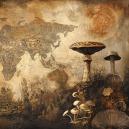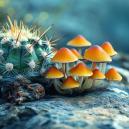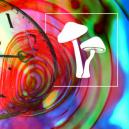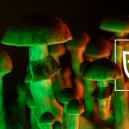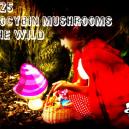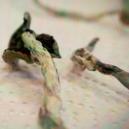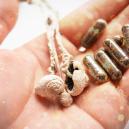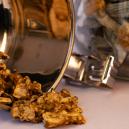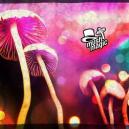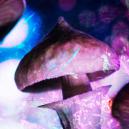The Ultimate Incense Guide
Published : December 3rd, 2018

Burning incense has a long and rich history that reaches far back in time. Burning incense can also be used to enhance the tripping experience. Find out more with the MushMagic ultimate incense guide.
INCENSE AND HOW IT MAY BENEFIT YOU DURING A TRIP
BURNING INCENSE HAS A LONG HISTORY
Beginning as a Latin word for “set fire to” and “something burnt”, “incensum” morphed through the ages until the era of Middle English, when incense as we know and pronounce it today came into being.
Since Ancient Sumer and Babylon, incense has been burnt. Prehistoric Egypt burnt combustible bouquets and resin balls. The practice later found its way to Ancient Greece and then Ancient Rome. Indus valley civilisations burnt incense, and it has been used in China since Neolithic times. Much of Asia has long traditions of burning incense, and it is a common thing all over the world in the contemporary age.
INCENSE HAS MANY USES
Incense is used for pragmatic, aesthetic, mystical, and therapeutic purposes alike. Before efficient modern sanitation, incense was used to cover the dubious noisome leavings of human habitation, or as an insecticide and deterrent. Clothes were also dried over beds of hot stones upon which incense fumed. The infusion could repel insects, prevent skin problems, and just plain smelled nice.
Sumerians and Babylonians used incense as part of prayer offerings to seers and oracles. Korean Buddhist monks burn incense when they are at prayer and during purification rites. Since the sixth century, incense has been lit in Japanese Shinto shrines to honour the dead. Continuing on from ancient Roman use, the Catholic Church burns incense in censers, while the ancient Chinese used incense for formal ceremonies.
Many of the mystical and ceremonial practices that use incense are still active today. Buddhist temples wouldn’t be the same without altars and cauldrons stuffed with smouldering joss sticks, nor would churches and cathedrals without ministrants swinging censers with the smoke of frankincense and myrrh. Zen temples and meditation spaces are not complete without incense smoke lingering in the air.
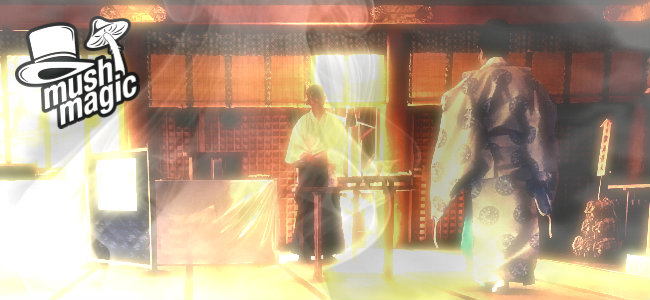
BURNING INCENSE DURING A PSYCHEDELIC TRIP
Traditional uses aside, the contemporary world has embraced incense in many ways. The stoner who doesn’t light an incense stick or two at home when they blaze up is probably the odd one out. Shops of all kinds burn incense, which can be used as branding, leaving scent trails through malls and high streets. Burning incense can cleanse a space of negative energies, and has similar effects on the body and brain as aromatherapy.
In a number of ways, the burning of incense can be of benefit during a psychedelic trip. Smell is the most powerful trigger for memory. Aromas can suppress or enhance mood, and pleasant smells can keep bad mojo at bay. Using the tenets of aromatherapy as a guide, your incense experience can be given nuance depending on what aroma you choose.
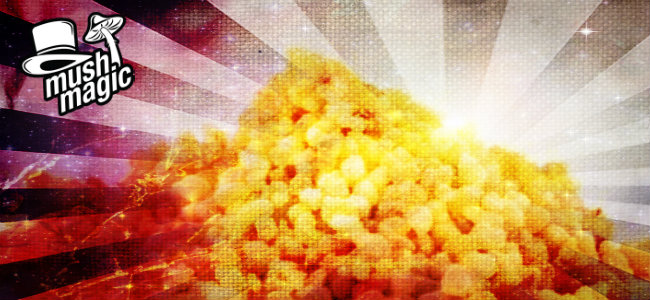
FRANKINCENSE
Frankincense is not incense made by some guy named Frank. It is one of the oldest and most respected sources of fragrance. It is most well-known as one of the gifts given to baby Jesus in the Christian theological legend. Frankincense is a resin extracted from the Boswellia frereana tree native to North Africa and the Middle East.
Frankincense is non-toxic, non-irritant, and non-allergenic. It is known to deepen the breath, which is of great benefit during meditation. It is calming and grounding, and known to be beneficial in soothing depression, anxiety, stress, and melancholia. It calms mental chatter, inspires living in the present moment, and can be of benefit to those who tend to dwell on the past. Frankincense can help boost the immune system, improves memory, and acts as a sleep aid.
MYRRH
Just as old and respected as Frankincense, and also recognised as one of the gifts to the infant Christus, myrrh is an Aramaic word for the gum extracted from a number of small shrubs from the genus Commiphora. It has been used for millennia as a medicinal extract and for making incense. The resin can be burnt directly by placing it on hot coals or other heated surfaces, or turned into incense.
Myrrh is beneficial for the lungs. It can act as a decongestant and bronchodilator, and has anticatarrhal properties which aid in clearing the lungs of mucus. It can help relieve spasms, cramps, aches, and muscle pains. It acts as a sedative and antidepressant, while enhancing spiritual connectivity and helping to control mood swings.
SANDALWOOD
Sandalwood is also ancient and well-respected. Extracted from old sandalwood trees mostly in India and Hawaii, Indian sandalwood is becoming very expensive as the trees are close to extinction. The older the tree, the better the quality, and the preferred age is 40–80 years old, with 80 being the highest quality.
Sandalwood has commanded much respect and dignity over the centuries, mainly in Hinduism, where celebrations, festivals, and religious rites are not complete without burning sandalwood incense. Sandalwood is relaxing and sedative by nature. It helps to calm anxiety, relieve stress, banish fear, and diminish restlessness. It promotes concentration, inner visions, and sustained positive thoughts and emotions.
PATCHOULI
The familiar scent of patchouli has been used in fragrances for centuries. The hippie movement of the sixties was characterised by the smell of patchouli. It comes from a small herbaceous bush of the Pogostemon family and is closely related to sage, mint, and lavender.
Patchouli enhances mood, can help with insomnia, acts as a non-toxic bug repellent, and may even help fight depression. Inhaling patchouli stimulates the release of serotonin and dopamine, which is known to reduce anger and anxiety. Patchouli promotes an atmosphere of tranquillity and is often used for this purpose during meditation and prayer—or during a psychedelic trip.
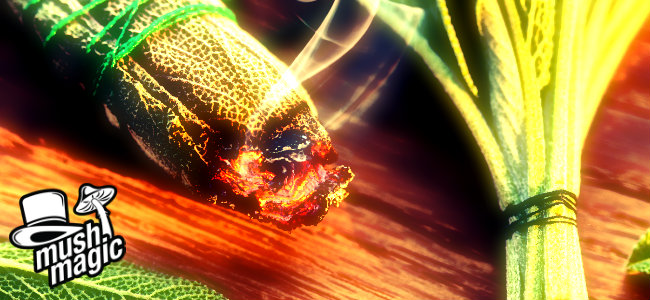
SAGE
Sage was used by First Nation American peoples as smudge sticks to clear living spaces of bad spirits and negative energy. It has been used by many cultures for thousands of years for similar purposes, both domestically and during ceremonies and rituals. It is a small shrub-like herb with large furry leaves covered in trichomes. It is a member of the mint family and shares properties similar to lavender.
Sage is said to help enhance memory, and may be of benefit to dementia and Alzheimer’s patients. It can help improve mental capacity, cognitive performance, and attentiveness, all while inducing a calming and contented effect. It is a non-toxic pest repellent and is believed to create a barrier to negative spirits in a space.
SO MANY AROMAS, SO LITTLE TIME
Incense aromas are of course not limited to these classic fragrances. Citrus is good for alleviating anxiety, and peppermint is good for reducing nausea and relieving tension/headaches. The list goes on.
Potpourris of any number of fragrances can be blended together. You can even purchase neutral incense sticks to soak in essential oils and customise your own. Some are well-known, like nag champa, probably one of the most commonly used and easily recognisable incense aromas in the world. Some are gloriously fragrant mixes, while other cheap concoctions smell like the cat litter tray hasn’t been cleaned in a week.
SIMPLE OR ARTISTIC BURNERS
Burning incense can be a simple affair or an elaborate artistic endeavour. From a simple sliver of wood, clay, metal, or bone to fetishistic sculptures doubling as burners, incense burners can appear in a wide variety of forms to suit the modest or extravagant buyer—and everyone in between.
HOW TO BURN INCENSE
Incense comes in a number of forms, such as sticks, which can either have a bamboo core or be pure incense. There are also cones, which are placed on a tray of some kind, and pressed balls or pellets.
Burning incense is a simple affair. Apply a flame to the stick, cone, or pellet until a glowing ember has developed. If it catches fire, blow it out, as shaking could loosen the ember and set something on fire. Then, just place the now smouldering and deliciously fuming incense in your choice of holder. Some caution is needed as it is a fire hazard, so don’t place burning incense near anything remotely flammable.
INCENSE DOESN’T JUST SMELL GOOD
Clear your space of negative energy. Give a healthy lustre to your immediate environment and suffuse your experience with nuance by selecting an appropriate fragrance. Incense not only smells good, it can be a way to dramatically improve your state of mind—whether you’re tripping on psychedelics or not.

